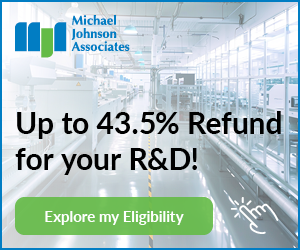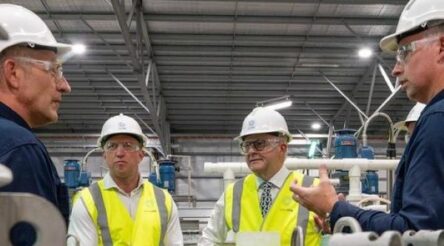Towards 3% R&D – Tax incentive is alive and kicking by Kris Gale

Today in our editorial series – Towards 3% R&D – Turbocharging Australia’s Innovation Effort – we turn to the main support mechanism available for innovation – the R&D Tax Incentive. By Kris Gale.
In Minister Husic’s 3% R&D drive to survive, one constant refrain in the Government’s innovation support story is the need to make full use of the R&D Tax Incentive (RDTI).
Yet how often have you heard the following statement in recent years – “I don’t claim the RDTI. The Federal Government is cracking down on taxpayers and it’s just not worth the risk.”
With 13,000 companies currently claiming the RDTI, it’s surprising that this sentiment still exists but it remains a belief many see as well founded.
There is still a concerted hangover from the last decade where the dual agency of the ATO and AusIndustry gave rise to legitimate and widespread concerns that the Government was trying to so restrict the eligibility criteria of the RDTI. At times the programme was seen to be heading to irrelevance.
Added to that, there was pending legislation to dramatically reduce the value of the RDTI, particularly for larger organisations. Periodic releases published by the Government were more likely to be labelled as ‘alerts’ than ‘promotions’.
Despite that environment, even then the programme remained worth claiming, provided you understood what the legislation was actually designed to support and you kept contemporaneous records of what you did and what you spent.
Well, if the case to make claims was more than arguable last decade, a series of fortunate events since that time has made the business of accessing the RDTI a far more secure and valuable one in the middle of this one.
So much so that eligible companies developing new and improved products really have no excuse to not be making annual RDTI claims.
Those key events may be summarised as follows:
The administrative ‘crackdown’ on taxpayers that took place between 2015 to 2019 came to an end due to a combination of the courts confirming the breadth of the definition of eligible R&D activities, an influential Small Business and Family Enterprise Ombudsman’s report and persuasive public debate.
- The Coalition dropped its RDTI cuts in the October 2020 Budget, acknowledging the critical role played by science and innovation in the early days of the pandemic and in enabling Australia to meet a Net Zero 2050 emission target.
- In July 2021, the Coalition relaunched a more valuable RDTI which has improved the innovation support framework.
- And the return of the Labor Government that has seen the RDTI maintained in its present form as it looks towards the delivery of its big innovation support reform, the $15 billion National Reconstruction Fund, later this year.
Underpinning the positive matters described above is the fact that the definitions of eligible R&D activities and expenditures remain unchanged since the RDTI was introduced in July 2011. This period of stability is without precedent in the field of government support for industry.
@AuManufacturing will publish contributions from readers for our series – Towards 3% R&D – turbocharging our national innovation effort – for the next month and in an e-Book, and we urge you to contribute. Call Peter Roberts, 0419 140679 or write to [email protected].
Now, of course, I need to leaven the premise that it’s all rainbows and unicorns when claiming the RDTI in 2024 by sharing with you some recent occurrences that remind us all to stay fully abreast of what the Government is saying about the programme.
Two Taxpayer Alerts were published by the ATO in late 2023 regarding overseas R&D claims and payments to associates.
Of particular note in these Alerts is the ATO’s clear position that companies can only claim R&D expenditures incurred with their associates in the year they are actually paid, unless the R&D entity makes an irrevocable election.
Overall, the Alerts were a reminder to follow the law and was, thankfully, not an indication of any great tightening of the eligibility requirements.
And a very recent AAT case also cast uncertainty about whether both AusIndustry and the ATO can assess the eligibility of a taxpayer’s R&D activities. We all need to work to get public reassurance that only AusIndustry has the carriage of this fundamental aspect of the RDTI.
To stay on top of all this, you need good advice. And good advice will inevitably be a key part of ensuring that your business makes appropriate use of the RDTI, a programme that is very much alive and kicking.
Kris Gale is the longest serving RDTI consultant in Australia, having joined Michael Johnson Associates (MJA) in 1987. He has experienced all dimensions of the programme from day-to-day consulting with companies to helping companies on audit and dealing with government policy makers and appearing before Senate committees as an expert in the field. Kris is a founding member of the Federal Government’s RDTI National Reference Group and the RDTI Roundtable, and recently was appointed to the Board Of Taxation’s review of the dual agency delivery model for the RDTI.
This series is brought to you through the support of our principal sponsor, public accounting, tax, consulting and business advisory BDO, and R&D tax incentive consultancy Michael Johnson Associates.
Picture: Kris Gale
Further reading:
Towards 3% R&D – Boosting industry and research collaboration, by Dr Tony Peacock
Towards 3% R&D – The Statistics Do Not Lie By Dr John Howard
Towards 3% R&D – the role of industry policy by Roy Green
Towards 3% R&D – continuous improvement in manufacturing by Serena Ross
Towards 3% R&D – Australia’s climate opportunity by Dr Katherine Woodthorpe
@aumanufacturing Sections
Analysis and Commentary Awards Defence Manufacturing News Podcast Technology Videos












